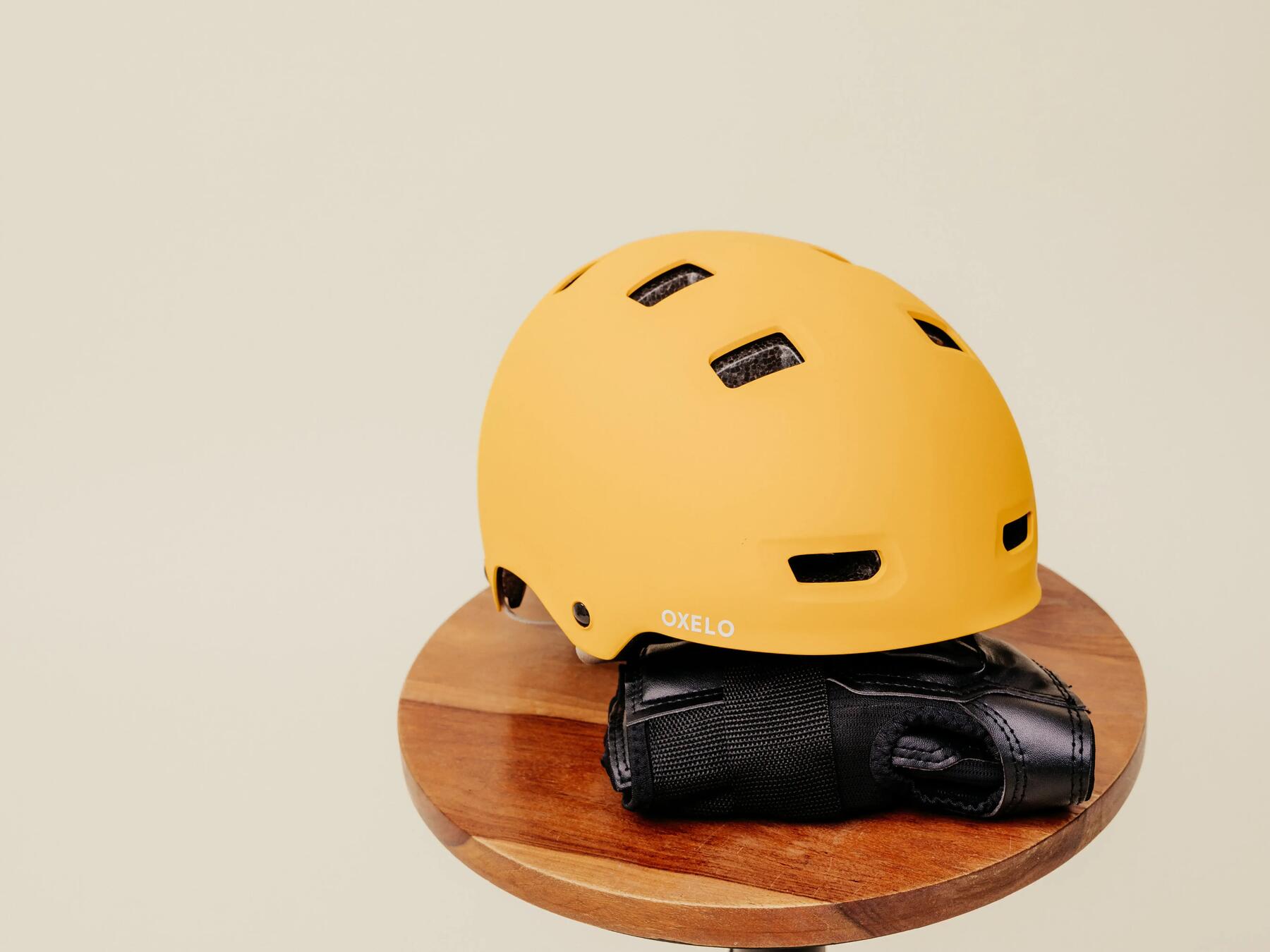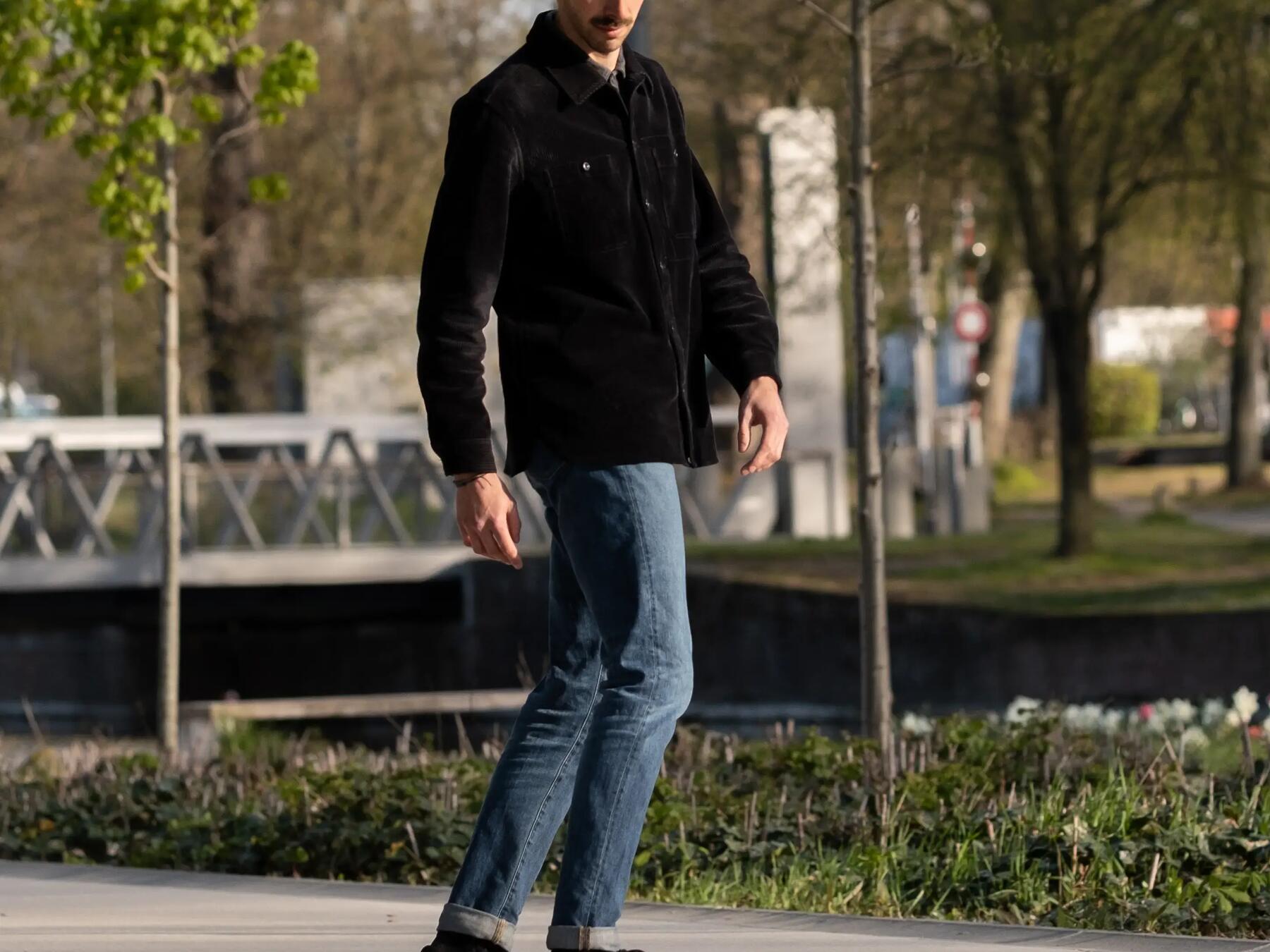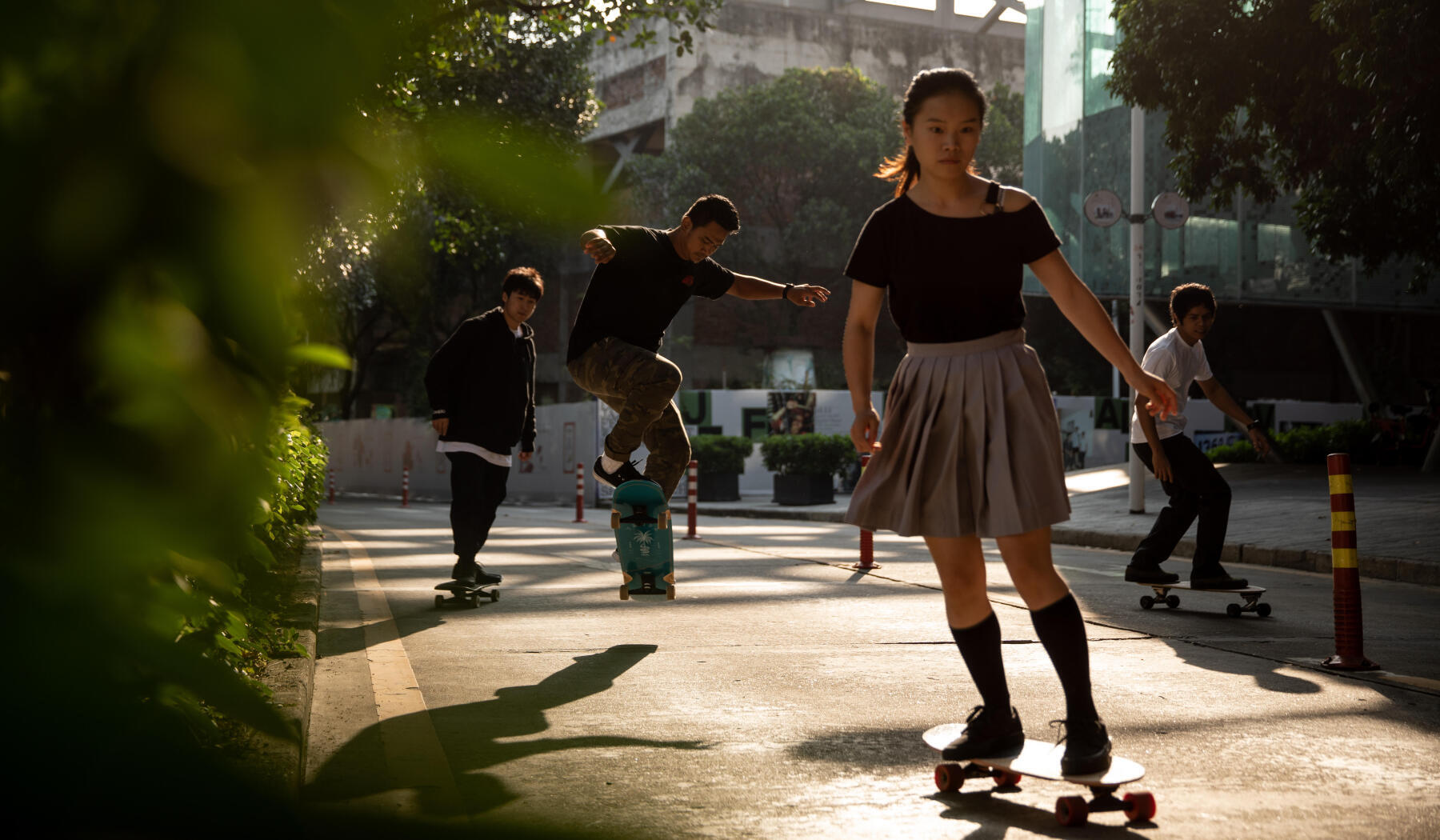Foot positioning on the skateboard: correct foot positioning for pushing and riding
Once you have determined if you are goofy or regular it is time to get on your board and get moving. In skateboarding you don't position your feet to push and to ride in the same way.
If you are regular (left foot forward) it is the left foot that is positioned on the board and the right foot on the ground to push. If you are goofy (right foot forward) it is the right foot that is positioned on the board and the left foot on the ground to push.
First step: the front foot should be parallel to your board and the toes should be approximately between the 4 front screws, you can move your foot forward or back slightly if you feel more comfortable. Make sure your foot is centred on the board so that you have good balance and can push straight. Your back foot is on the ground, parallel to the board (and to the other foot) with your heel approximately between the 4 back screws.
Second step: This is the moment to push off with your back foot to get moving. You have to put your weight on your front leg and slightly bend your knee, with your back foot you push and lift your heel and then your whole foot. Logically you move, so don't freak out. Keep your foot parallel to the board and bring it back level with the front screws to give a second push.
Third step: It is time to place the back foot on the board. The foot should be placed approximately at the level of the screws, or slightly behind them, and perpendicular to the board this time. Avoid standing with your feet together on a skateboard. You will have better control of your board and better balance with your legs apart and your knees bent. Once the back foot is in the right position, it is time to shift the front foot to a good riding position. Your front foot should be at about 45 degrees. Look forward with your shoulders slightly open.







